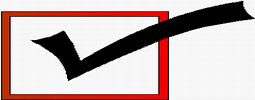 Writing picture book fiction is quite possibly the hardest type of writing there is, and yet editors receive more picture book manuscripts than any other genre. To make your work stand out from the crowd, you need to do more than study how to devise a winning plot and create believable, unique characters. You need to polish your prose until it sparkles. Here’s a checklist to help with the editing process:
Writing picture book fiction is quite possibly the hardest type of writing there is, and yet editors receive more picture book manuscripts than any other genre. To make your work stand out from the crowd, you need to do more than study how to devise a winning plot and create believable, unique characters. You need to polish your prose until it sparkles. Here’s a checklist to help with the editing process:
* Check the pacing. Picture books are generally 32 pages long, which means you’ll have about 28 pages of text and illustration. So break your text into 28 chunks and place each on a separate piece of paper. Staple the pages together to look like a book and read your story as you turn the pages. Notice the pacing and how the action unfolds. Does the story flow evenly, or are there several pages where nothing special happens? Does something occur on the righthand page or each two-page spread–a rise in action, a recurring phrase, a funny moment– that makes the reader want to turn the page and see what happens next?
* Note the illustration potential. Since you’ve made your manuscript into a “book,” think about what the illustrations might look like. Are there enough changing scenes to inspire a different illustration on each page, or at least every two-page spread? Is the story told with a lot of visual elements (actions and events the reader can see)? Are there long scenes of dialogue that go on for more than one book page? (Note: Making your manuscript into a dummy book and thinking about the illustrations are for your benefit only. When you submit the manuscript to a publisher, you’d type it doublespaced without identifying where the page breaks would go. You’d also refrain from discussing any illustration ideas until the editor asks for your thoughts.)
* Cut words. If you use two words to describe a character, try to find one more exact word to do the trick. Eliminate verbal clutter– words like “big,” “little,” “very,” “almost”– that don’t add any real meaning to the sentence, and instead choose strong, active nouns and verbs. Strike any sentences or scenes that don’t directly advance the plot.
* Use concrete images. Be sure to convey the story through concrete visual images the reader can see and the illustrator can draw. Describe abstract concepts such as feelings with sensory details the character (and the reader) can smell, hear, touch, see and taste.
* Craft a satisfying ending. Does your plot have an identifiable yet surprising climax in which all the action comes together and the main character solves his or her problem? Is this climax contained within one book page? After the climax, is the story resolved (wrapped up) quickly? The resolution must feel complete and satisfying for the reader, but shouldn’t be drawn out. Make it a book page or less, and your readers won’t hesitate to revisit your story many times over.
